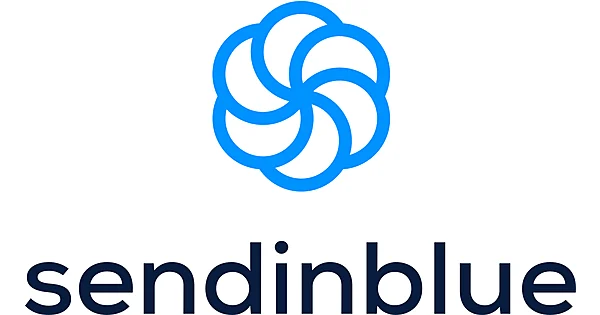Hey there! If you’re diving into the world of email marketing, you’ve likely bumped into two big names: SendinBlue and SendX. Both are powerhouse tools in the email marketing arena, but which one is the right pick for you? In this deep dive, we’re going to unravel the mysteries of these platforms, comparing them on various fronts. Whether you’re a small business owner, a marketing maven, or just curious, this guide is crafted to help you make an informed decision. So, let’s roll up our sleeves and get started!
| SendinBlue | SendX |
|---|---|
 |  |
| G2 Score – 4.5 out of 5 stars | G2 Score – 4.6 out of 5 stars |
| TrustRadius Score -8.0 out of 10 | TrustRadius Score – Nil |
Ease of Use and User Interface
When it comes to email marketing tools, the ease of use and the user interface (UI) are like the first impression – they matter a lot. Let’s face it, no one wants to spend hours figuring out how to send a simple email. That’s why we’re kicking things off with a look at how user-friendly SendinBlue and SendX are.
SendinBlue’s User Experience
SendinBlue, known for its intuitive design, is like that friendly neighbor who’s always easy to talk to. From the get-go, it welcomes you with an uncluttered dashboard that’s a breeze to navigate. For beginners, this is a big plus. You can find what you need without getting lost in a maze of menus.
Creating an email campaign in SendinBlue is almost like telling a story. You start with a clear template selection screen, where choices range from the professional to the playfully creative. Customizing these templates is straightforward, thanks to their drag-and-drop editor. It’s like playing with Lego blocks – you can see what you’re building as you go along.
One thing that stands out is SendinBlue’s attention to detail in its design. The color scheme is soothing, the fonts are readable, and the overall layout doesn’t scream for attention. It’s like walking into a well-organized room where everything is in its place.
SendX’s Approach to User Interface
SendX, on the other hand, is like that tech-savvy friend who knows all the shortcuts. Its UI is crisp, with a modern touch that appeals to users who love a bit of tech flair. The dashboard is efficient, with key metrics upfront – great for those who want to see their campaign’s performance at a glance.
Where SendX shines is in its straightforward approach to campaign creation. The process is linear and guided, which means you’re less likely to get sidetracked. For those who appreciate a bit of hand-holding, this is perfect. The template gallery is extensive, catering to a wide range of styles and industries.
The editor in SendX is also a drag-and-drop affair, but with a twist. It’s more detailed, offering finer control over elements. This can be a double-edged sword – great for perfectionists but potentially overwhelming for newbies.
The Verdict on User Interface
If you’re new to email marketing and prefer a gentle introduction, SendinBlue’s friendly and straightforward interface is a winner. It’s like having a warm cup of tea – comforting and easy. But if you’re not intimidated by a few more bells and whistles and crave a bit more control, SendX’s modern and detailed UI might be your cup of coffee – strong and invigorating.
Features and Functionality
After easing into the user interfaces, let’s shift gears to the meat of the matter – features and functionality. Here, we’re not just looking at what bells and whistles each tool has, but how these features can genuinely elevate your email marketing game.
SendinBlue’s Feature Set
SendinBlue is like a Swiss Army knife – it packs a variety of tools in one neat package. Beyond basic email campaigns, it offers SMS marketing, a feature not commonly found in many email marketing platforms. This is a game-changer for businesses looking to diversify their outreach.
The automation capabilities of SendinBlue are worth mentioning. With a user-friendly workflow editor, you can set up sophisticated email sequences based on user behavior. Imagine sending a personalized birthday discount to a customer or a follow-up email to someone who abandoned their cart. These little touches can significantly enhance customer engagement.
Another standout feature is the transactional email service. This is ideal for businesses that need to send order confirmations, shipping notifications, and other transactional messages. It’s like having a reliable messenger who ensures your critical emails don’t get lost in the shuffle.
SendX’s Arsenal of Tools
SendX is akin to a high-tech toolbelt, equipped with modern features that cater to savvy marketers. One of its strengths is its robust automation capabilities. You can create complex trigger-based sequences that make your emails feel more personalized and timely. It’s like having a virtual assistant who knows exactly when to engage your subscribers.
Another area where SendX excels is its detailed analytics and reporting. The platform offers insightful data on email opens, clicks, and conversions. This is crucial for understanding the effectiveness of your campaigns and making data-driven decisions. It’s like having a microscope that lets you zoom in on your campaign’s performance.
Additionally, SendX provides a unique feature called “SendX Opti-Send Technology.” This technology optimizes email send times based on when individual subscribers are most likely to open them. It’s like having a crystal ball that predicts the best time to reach your audience.
Balancing Features with Needs
When comparing the features of SendinBlue and SendX, it boils down to what your business needs most. If you’re looking for an all-rounder with SMS capabilities and transactional email support, SendinBlue could be your go-to. But if you’re leaning towards advanced automation and data-driven insights, SendX might be the tool that aligns with your marketing strategy.
Pricing and Value for Money
Navigating the pricing landscape of email marketing tools can be as tricky as walking through a maze. It’s crucial to find a balance between what you’re paying and the value you’re receiving. Let’s break down the pricing structures of SendinBlue and SendX to see which offers the best bang for your buck.
| SendinBlue | Free Plan: Includes unlimited contacts with 300 emails per day. Lite Plan: Starting around $25/month, this plan includes no daily sending limit and is suitable for smaller businesses. Premium Plan: Starting from around $65/month, offering advanced features like marketing automation, Facebook ads, landing pages, and multi-user access. Enterprise Plan: Custom pricing with advanced and custom features, dedicated account manager, and priority support. |
| SendX | Pricing Structure: Based on the number of subscribers, with all plans offering unlimited email sends. Basic Plans: Up to 1,000 subscribers: Starting at around $7.49/month when billed annually. Up to 2,500 subscribers: Starting at around $14.99/month when billed annually. Up to 5,000 subscribers: Starting at around $29.99/month when billed annually. Higher Volume Plans: For larger lists, the pricing continues to scale. For example: Up to 10,000 subscribers: Starting at around $39.99/month. Up to 15,000 subscribers: Pricing available upon request. |
SendinBlue’s Pricing Strategy
SendinBlue adopts a unique pricing approach, where the costs are based on the number of emails sent, rather than the number of contacts in your list. This is like paying for the amount of water you use, rather than the size of your water tank. For businesses with a large contact list but lower email sending frequency, this can be a cost-effective solution.
Their free plan is quite generous, offering a daily sending limit of 300 emails. This is perfect for small businesses or startups just dipping their toes into email marketing. As you scale up, their paid plans offer more advanced features like segmentation, A/B testing, and marketing automation.
The pricing tiers increase with the volume of emails, which means you can gradually scale your expenses as your business grows. It’s like climbing a ladder, where each rung represents a new stage of your business’s email marketing maturity.
SendX’s Pricing Approach
SendX takes a more traditional route with its pricing, based on the number of subscribers. This is like paying a flat fee for your water tank, no matter how much water you use. It’s straightforward and predictable, which can be a relief for budget-conscious businesses.
SendX also offers a free trial, but they don’t have a free forever plan. Their paid plans start at a competitive price point, making it accessible for small to medium-sized businesses. The pricing scales as your subscriber list grows, but the increase is gradual and transparent.
One of the appealing aspects of SendX is that all features are included in every plan. This means you get access to all their tools from the get-go, without having to pay extra as you grow. It’s like having an all-access pass to an amusement park – you get to enjoy all the rides without any additional cost.
Assessing Value for Money
When it comes to choosing between SendinBlue and SendX based on pricing, it really comes down to your business model and email marketing strategy. If your strategy involves sending frequent emails to a smaller list, SendX might be more economical. But if you’re dealing with a large list and send emails less frequently, SendinBlue’s pricing structure could be more beneficial.

Related: Check out our free SEO suite

Customer Support and Resources
In the world of email marketing, having reliable customer support and access to helpful resources can be a lifesaver. It’s like having a trusty compass when navigating uncharted territories. Let’s see how SendinBlue and SendX stack up in terms of supporting their users.
SendinBlue’s Support System
SendinBlue seems to understand the importance of a strong support system. They offer a range of support options, including email, phone, and live chat. It’s like having a multi-tool in your pocket; whatever the situation, you’ve got something to help you out.
What’s particularly commendable about SendinBlue is their extensive knowledge base and resource center. It’s packed with tutorials, guides, and FAQs. This can be a gold mine for DIYers who prefer to find answers on their own. It’s like having a library at your fingertips – you just need to reach out and grab the information you need.
Moreover, SendinBlue provides resources in multiple languages, which is a nod to their global user base. It’s like having a multilingual guide who can help you in your language of preference.
SendX’s Approach to Customer Support
SendX, on the other hand, prides itself on its efficient customer support. They offer 24/7 live chat support, ensuring that help is always just a message away. This can be incredibly reassuring, especially if you’re working on time-sensitive campaigns. It’s like having a 24-hour helpline for any emergencies that might pop up.
In addition to live chat, SendX also offers email support. However, they don’t provide phone support, which might be a downside for those who prefer talking to a support representative.
When it comes to self-help resources, SendX has a decent knowledge base, but it might not be as comprehensive as SendinBlue’s. They do provide guides and articles, but the range might not be as vast. It’s akin to having a basic guidebook rather than a detailed atlas.
Evaluating the Support Landscape
The level of customer support and resources offered by an email marketing tool can greatly influence your overall experience. If you’re the kind of user who values a wide array of self-help resources and multiple support channels, SendinBlue could be more up your alley. But if you prioritize round-the-clock live chat support and are okay with a more focused set of resources, SendX could be your go-to.
Integration and Compatibility
In today’s interconnected digital world, the ability of a tool to play well with others can make or break its effectiveness. Let’s delve into how SendinBlue and SendX integrate with other applications and systems, which is akin to assessing how well they can work as part of a larger team.
SendinBlue’s Integration Ecosystem
SendinBlue shows its versatility with a robust integration ecosystem. It’s like a social butterfly that gets along with almost everyone at the party. From popular CMS platforms like WordPress to CRM systems like Salesforce, SendinBlue has made sure it can connect with a wide array of services.
One of the standout features of SendinBlue’s integration capabilities is its e-commerce compatibility, especially with platforms like Shopify and Magento. This makes it an attractive option for online retailers who want to streamline their email marketing with their e-commerce activities. It’s like having a bridge that connects your online store directly with your marketing efforts.
Additionally, SendinBlue offers a well-documented API, allowing for custom integrations. This is great for businesses with specific needs that off-the-shelf integrations can’t fulfill. It’s akin to having a custom-tailored suit – it just fits your specific requirements perfectly.
SendX’s Integration Capabilities
SendX also offers a commendable range of integrations, ensuring it can connect with various platforms and tools. Its compatibility with major CMS systems, webinar tools, and CRM software indicates a strong understanding of the diverse needs of its users. It’s like having a key that opens multiple doors across your digital landscape.
While SendX’s integration list is impressive, it might not be as extensive as SendinBlue’s. However, for most standard uses, such as syncing with CRM tools or connecting with lead generation software, SendX has got you covered.
SendX also offers API access, allowing for custom integrations. This is essential for businesses that need a more tailored approach to their email marketing integrations. It’s like adding a few custom features to your car – they make the ride more suited to your needs.
Integration as a Key Factor
In the world of email marketing, the ability to integrate seamlessly with other tools can significantly enhance efficiency and effectiveness. If your business relies heavily on e-commerce platforms or you need a wide range of integrations, SendinBlue might be the better choice. However, if your integration needs align with the commonly used platforms and you appreciate a tool that covers the basics well, SendX could be the perfect fit.
Deliverability and Performance
When it comes to email marketing, deliverability is the name of the game. It’s like ensuring your letter not only gets sent but also lands right in the recipient’s mailbox, not lost in a sea of spam folders. Let’s compare how SendinBlue and SendX fare in this critical aspect.
SendinBlue’s Deliverability
SendinBlue takes deliverability seriously. They have implemented several measures to ensure high delivery rates. This includes a dedicated IP option, which is like having your own personal lane on the information highway. It reduces the risk of being lumped with spammers and improves the chances of your emails reaching their intended inboxes.
Furthermore, SendinBlue provides advanced tools for managing sender reputation, such as domain authentication and regular data cleansing. Think of it as having a good credit score in the email world; it ensures your emails are trusted and welcomed.
The platform also offers insightful deliverability analytics, enabling you to track the success of your campaigns and make informed adjustments. This is akin to having a GPS tracker for your emails – you know exactly where they are going and how well they are performing.
SendX’s Performance in Deliverability
SendX also puts a strong emphasis on deliverability. They use artificial intelligence to optimize send times, which can significantly boost open rates. This is like having a smart assistant who knows the best time to knock on someone’s door.
Moreover, SendX employs advanced email verification techniques to minimize bounces and ensure a clean mailing list. This is like having a filter that ensures only the cleanest and most efficient fuel goes into your engine, making it run smoother and more effectively.
One area where SendX stands out is in its commitment to follow best practices for email deliverability. This includes providing easy unsubscribe options and adhering to email sending norms, which helps maintain a healthy sender reputation. It’s like following the rules of the road to ensure a smooth and trouble-free journey.
Making the Right Choice for Deliverability
Both SendinBlue and SendX offer strong deliverability features, but their approaches differ slightly. If you’re looking for a platform that offers more control over your sender reputation and provides a dedicated IP, SendinBlue could be the better choice. On the other hand, if you value AI-driven send time optimization and stringent adherence to deliverability best practices, SendX might be more up your alley.
Conclusion
As we wrap up our journey through the intricate landscapes of SendinBlue and SendX, it’s clear that both platforms offer unique strengths and cater to different needs.
SendinBlue emerges as a versatile and user-friendly option, especially appealing to those venturing into email marketing or managing large contact lists with less frequent mailouts. Its straightforward UI, generous free plan, and diverse features, including SMS marketing and transactional emails, make it an all-rounder. The platform’s robust integration capabilities and strong focus on deliverability further solidify its standing as a dependable choice for a wide range of users.
On the flip side, SendX shines with its detailed analytics, advanced automation, and AI-driven optimizations. For the data-driven marketer who relishes in-depth insights and values the precision of AI in optimizing campaign timings, SendX stands out. Its straightforward pricing based on subscriber count and 24/7 live chat support cater to those who appreciate simplicity in costs and accessibility in assistance.
Ultimately, the choice between SendinBlue and SendX boils down to your specific needs and preferences. If your priority lies in ease of use, diverse functionality, and extensive integration options, SendinBlue might be your ideal companion. However, if you lean towards advanced automation, detailed analytics, and value AI’s role in enhancing campaign performance, SendX could be the tool that aligns better with your marketing strategy.
Remember, the best email marketing tool is not about the most features; it’s about the right features that align with your business goals and workflow. Both SendinBlue and SendX have their own charms and strengths, and your choice should be guided by your unique marketing landscape, audience, and objectives. Whichever you choose, you’re stepping into a world of enhanced communication and engagement, poised to elevate your email marketing efforts to new heights.
So, take a moment, assess your needs, and choose wisely. Whether it’s the broad-reaching capabilities of SendinBlue or the targeted precision of SendX, your journey towards more effective and impactful email marketing is just about to begin.
Read next:
- Blockchain Marketing: What is it and how to do it?
- 9 Best Cloud-Based HR Software: The Ultimate Guide
- 7 Best Email Marketing Software for Small Businesses: A Comparison
- 9+ Top Project Management Software: Which One is Right for Your Business?
- Best Accounting Software for Small Businesses: A Comprehensive Review






















Comments are closed.